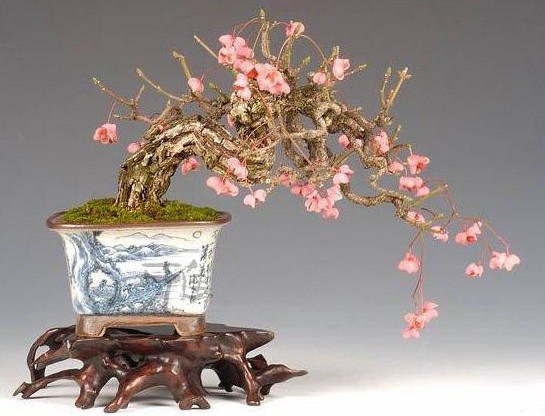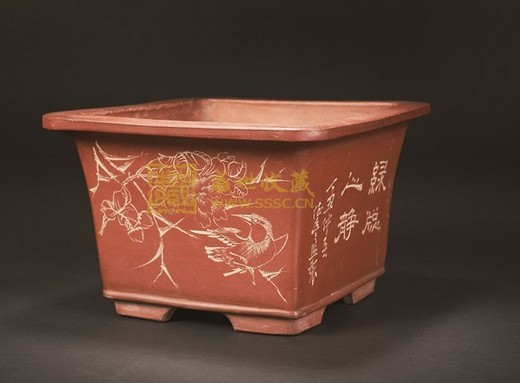The coexistence of traditional bonsai and folk art bonsai
The author of "Records of the sick Plum Museum" called the excessive plum pile as "diseased plum", and removed its binding, transplanting and rebirth, although this is not the author's original intention, but from one side, we can also see that what the literati of all ages advocated is a "natural" bonsai with a strong cultural and artistic atmosphere. The Ming and Qing dynasties are the era of high development of bonsai in China, and the bonsai specifically described in their main bonsai monographs are also the "natural" bonsai that we inherit today.

Thus it can be seen that "natural" bonsai is the orthodoxy and tradition of Chinese bonsai art. Today, our bonsai art creation is to inherit this fine tradition, so that the development of Chinese bonsai art has achieved unprecedented success.
During the Qing Dynasty and the Republic of China, folk bonsai sprang up in China, such as Nantong, Yangzhou, Suzhou, Huizhou, Sichuan and other places. This kind of bonsai belongs to folk art, which has all the characteristics of folk art.
However, for nearly half a century, we have a wrong understanding of this, thinking that this is the tradition of Chinese bonsai art, so we shout "inherit the tradition". In essence, it is to inherit the elegant traditional literati bonsai art to inherit the tradition of folk art. This is a big mistake. In this regard, there is a clear distinction in the historical facts of bonsai in our country.
Bonsai works in China belong to the same culture and art as painting and poetry, so bonsai works can be deeply integrated in traditional Chinese painting, poetry and literary works, while pattern bonsai can not achieve this level. But how do we explain the bonsai situation in that period? I think it may be because at that time, Chinese bonsai appeared the coexistence of cultural traditional bonsai and folk art bonsai, and developed at the same time on two different levels and two different clues.
This article is extracted from the first draft of Zhejiang Bonsai. It is intended to attract jade and clear the source. Welcome to discuss and comment.
Time: 2019-05-23 Click:
- Prev

Types and principles of pots for bonsai
There are mainly two kinds of bonsai pots: pile landscape basin and landscape basin. There are drainage holes at the bottom of the pile view basin, while there are no drainage holes at the bottom of the landscape basin. There are many styles of pots. According to the different materials of bonsai basin, it can be divided into the following: 1. Purple sand basin: mainly produced in Yixing and other places in Jiangsu Province. The texture is fine and tough, and the permeability is good.
- Next

How to improve the appreciation of Anthurium andraeanum bonsai
Anthurium andraeanum, also known as andzu flower or fire crane flower, is a more ornamental plant variety. Anthurium andraeanum is a kind of plant mainly produced in tropical South America, but after extensive introduction and cultivation, Anthurium andraeanum can be found in Asia, Europe and other places.
Related
- Fuxing push coffee new agricultural production and marketing class: lack of small-scale processing plants
- Jujube rice field leisure farm deep ploughing Yilan for five years to create a space for organic food and play
- Nongyu Farm-A trial of organic papaya for brave women with advanced technology
- Four points for attention in the prevention and control of diseases and insect pests of edible fungi
- How to add nutrient solution to Edible Fungi
- Is there any good way to control edible fungus mites?
- Open Inoculation Technology of Edible Fungi
- Is there any clever way to use fertilizer for edible fungus in winter?
- What agents are used to kill the pathogens of edible fungi in the mushroom shed?
- Rapid drying of Edible Fungi

